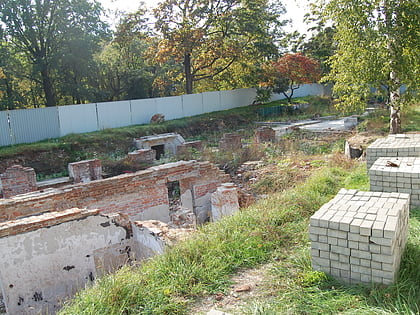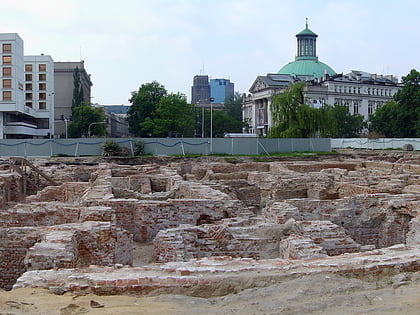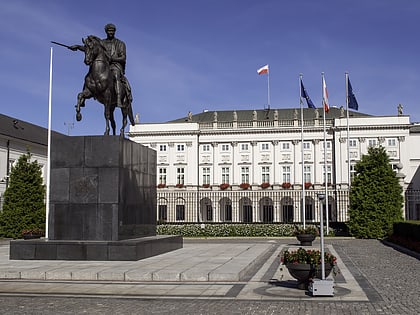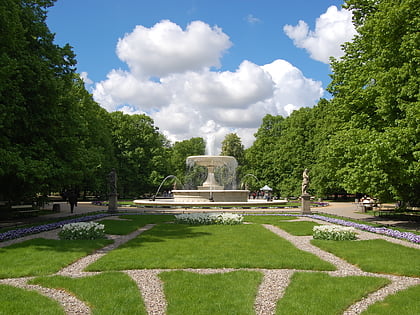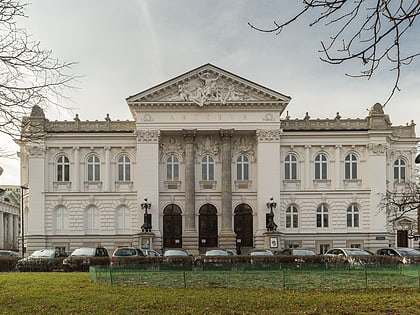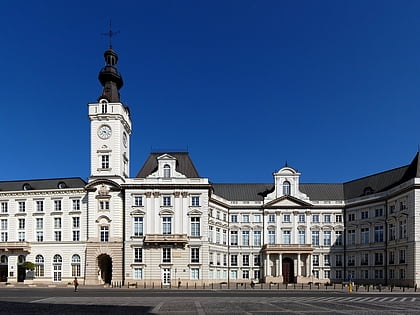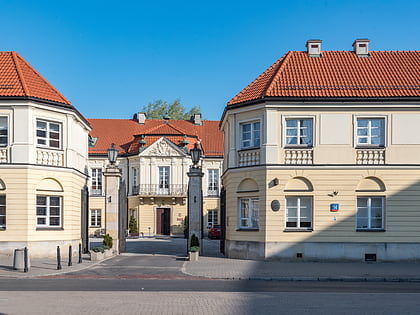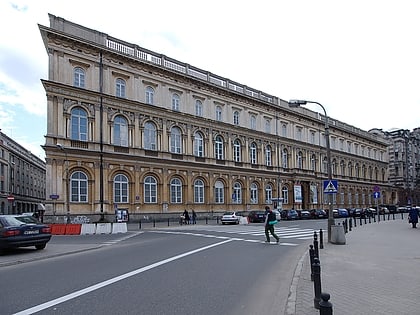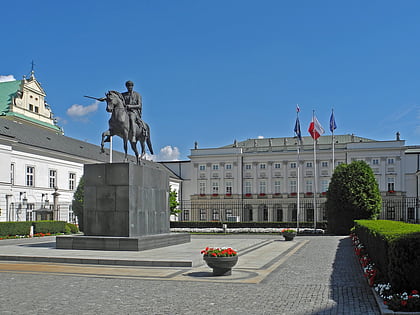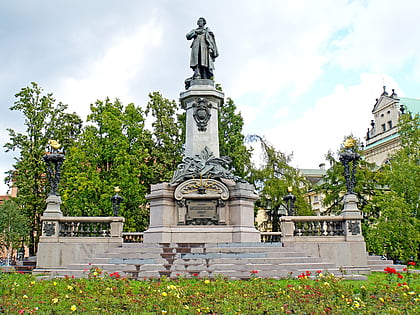Brühl Palace, Warsaw
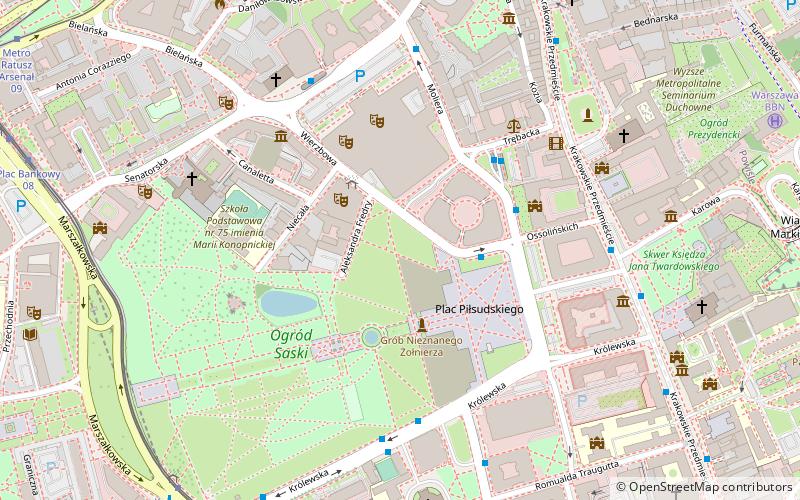

Facts and practical information
Brühl Palace, once a magnificent baroque edifice situated in the heart of Warsaw, Poland, stands as a poignant testament to the city's turbulent past. Erected in the 17th century for a Polish nobleman, Jerzy Ossoliński, the palace became the property of Heinrich von Brühl in 1750, after whom it was later named.
Renowned for its opulent design and sumptuous interiors, the palace served as both a royal residence and a governmental building throughout its history. It was here that King Stanisław II Augustus conducted many significant political affairs, and it became a symbol of Poland's political and cultural stature in Europe.
Tragically, the original Brühl Palace did not survive the ravages of World War II. In 1944, during the Warsaw Uprising, the German forces systematically destroyed the palace along with much of the city. The ruins lay as a somber reminder of the destruction until the decision was made not to rebuild it in the post-war period.
ul. Muzealna 8Śródmieścia (Śródmieście Północne)Warsaw
Brühl Palace – popular in the area (distance from the attraction)
Nearby attractions include: Saxon Palace, Presidential Palace, Tomb of the Unknown Soldier, Saxon Garden.
Frequently Asked Questions (FAQ)
Which popular attractions are close to Brühl Palace?
How to get to Brühl Palace by public transport?
Bus
- Plac Teatralny 01 • Lines: 107, 111 (2 min walk)
- Pl. Piłsudskiego 02 • Lines: 111 (3 min walk)
Tram
- Królewska 06 • Lines: 15, 18, 35, 4 (8 min walk)
- Plac Bankowy 07 • Lines: 15, 18, 35, 4 (10 min walk)
Metro
- Nowy Świat-Uniwersytet • Lines: M2 (12 min walk)
- Ratusz Arsenał • Lines: M1 (12 min walk)
Train
- Warsaw City Center (23 min walk)
- Warszawa Powiśle (24 min walk)
